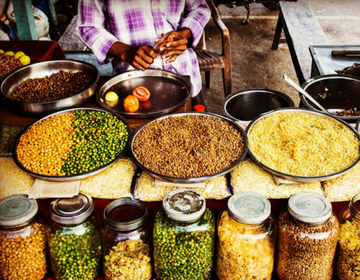Just as Vegemite is considered to be a unique Australian delicacy, different cultures each have their own delicacies, many you may never have heard of!
Whether or not you raise an eyebrow at any of the meals on the following list, it’s almost guaranteed you’ll find something on here you haven’t contemplated eating before. If you’re brave enough, check out ten unique foods from around the world!
1. Tuna eyeballs – Japan
Waste not, want not, right? In Japan, it’s commonplace to put aside the eyeballs of tuna, which are then sold cheap at supermarkets. They’re cooked by either boiling or steaming and apparently taste a bit like squid.
2. Fried tarantulas – Cambodia
This one’s not for the squeamish. Once viewed as a last resort food item, spiders went on to become popular in Cambodia and are now served as a deep fried snack marinated in salt, sugar, MSG and garlic.
3. Haggis – Scotland
Probably the most famous traditional Scottish food, Haggis involves the liver, heart and lungs of a sheep chopped up and mixed with diced onion, spices and oatmeal. It’s then stuffed into the sheep’s stomach and simmered until cooked.
4. Escamoles – Mexico
Otherwise known as insect caviar, escamoles are ant larvae. The food is considered a delicacy in Mexico and traces back to the Aztecs. Escamoles can be utilised in tacos, omelettes, or on their lonesome. The larvae are either fried with butter or deep fried, and have a slight nutty taste.
5. Casu Marzu – Italy
You may have tried some aged cheeses before, but how about cheese filled with live maggots? Italy’s casu marzu is made from Pecorino with the tasty little addition of cheese fly larvae. The exceptionally strong cheese can be enjoyed with or sans maggots.
6. Hakarl – Iceland
A very polarising dish, hakarl is the rotting carcass of a Greenland shark. The sharks are poisonous when fresh, so it’s buried underground in a shallow pit and pressed with stones until the poison dissipates. It’s then hung out to dry and cut into strips before being served. First time diners tend to find it disgusting, but it still manages to have some fans.
7. Century egg – China
It’s not exactly one hundred years old, but the century egg is a little older than some people may have considered consuming their eggs. The eggs are preserved for anywhere between a few weeks to a few months by soaking them in a solution composed of clay, ash and salt. The yolks take on a creamy, cheese-like texture and the whites turn into a dark jelly.
8. Locusts – Israel
That’s one way to solve a plague! Locusts are the only insect to be considered kosher, so Israelis eradicate the pests by eating them. Deep fried and chocolate covered locusts are particularly popular.
9. Kopi Luwak – Indonesia
Did you know the world’s most expensive coffee; Kopi Luwak is produced from cherries that have been digested by an Indonesian cat-like animal called a civet cat?! The resultant coffee beans are the most expensive in the world! Kopi Luwak is best enjoyed without milk or sugar to fully taste the unique flavour of the beans.
10. Vegemite – Australia
A staple in the Australian diet, Vegemite is a thick, black spread made from yeast extract. It is slightly salty and bitter in taste. Vegemite is best enjoyed on bread with a thick spread of butter. Vegemite and cheese is also a popular combination!
Do you know of any interesting or unique dishes from your culture of origin? How does your cultural cuisine differ from others? You could open up a discussion about intriguing cultural food practices at your a Taste of Harmony celebration!

























